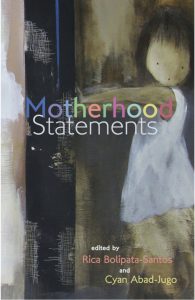
The first time I visited Baguio, I was already in college. I qualified for the university paper, and as part of our training, we were sent to the City of Pines to undergo a writing workshop.
It wasn’t hard to fall for Baguio’s charms. In between re-learning about the inverted triangle of news reporting, how to decipher proofreader’s marks, how to proofread, what are the different newspaper style guides, and so on, my fellow student journalists and I checked out the tourist traps and the rustic restaurants. Session Road was then not yet jam-packed with traffic, and taxis roamed sans air conditioning. Over all these, the scent of pine served as an olfactory reminder of the memories we were busily creating of those moments.
But sadly, in the two decades that I’ve been away from the Summer Capital of the Philippines, Baguio has slowly been eaten up by development under the guise of creeping urbanization. The Baguio of yore is disappearing under the onslaught of tourist kitsch and crass commercialism, save for the memories of those who live there and those who have made it their getaway home.
Before this backdrop of Baguio’s seeming fall from tourism grace comes “The Baguio We Know”, a collection of essays of Baguio’s residents, habitueÌs, and lovers, all who write about a strong attachment to the once lofty city, a place where one takes in a different kind of rejuvenation of the soul. These essays show a Baguio “that is much more than the handmaiden to tourism that some may falsely believe is the answer to this city’s ultimate salvation,” noted by the book’s editor, Grace Celeste Subido.
Readers will be struck by the different recollections recounted by the contributing writers. From roadside restaurants frequented by writers, to tiny cafeÌs whose walls hold the thousands of stories exchanged by strangers and friends alike, down to casual chess competitions in Burnham Park to taking slow afternoon walks up and down Session Road, there seems to be a place and a story of every activity and a chance of everyone to do what they want.
And food! Cecile Afable, the late media doyenne and editor of the Baguio Midland Courier, shared recipes for tapuey and pinoneg (among others); these served as the palate’s memory-keeper for those who are lucky enough to have partaken of this drink and dish that is flavored with a distinctly northern taste.
And there are those places whose mention conjures the sights, sounds and flavors of Baguio: Star CafeÌ. The Mile-Hi in John Hay. CafeÌ by the Ruins. Rose Bowl. CafeÌ Amapola. One can take a gustatory trip around the world just by walking around and checking out the restaurants.
Those who make the pilgrimage every summer, or move to plant new roots in this upland capital will find the magic that lends Baguio its ethereal, eternal charm. Coming home to Baguio can be as simple as watching storeowners unload the day’s vegetables onto a cart and into their market stall. Home is a fire roaring in the fireplace, the smoke mingling with the redolence of pine wafting through your room’s windows. Home is the courteous Baguio cabbies who return the change. Home is the fog that rolls in, regular as clockwork, in the afternoon, changing your breath into puffs of visible air in the chill weather.
Stay long enough, and you will soon realize that, yes, Baguio is home.
*** This article originally appeared in now
defunct ManilaSpeak.com ***



